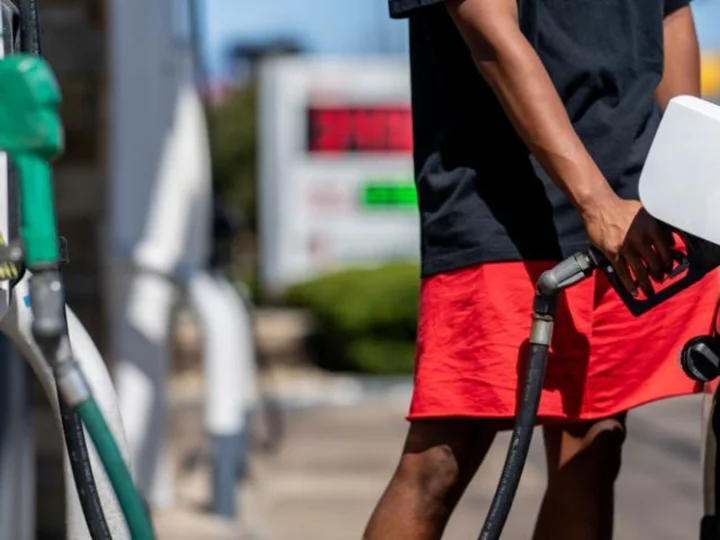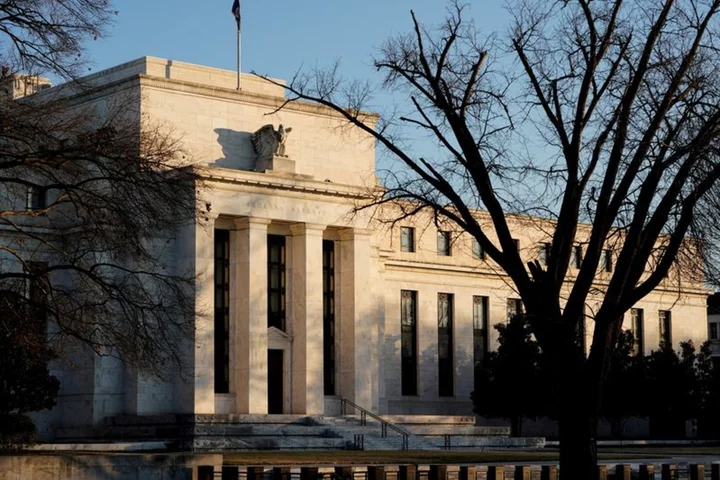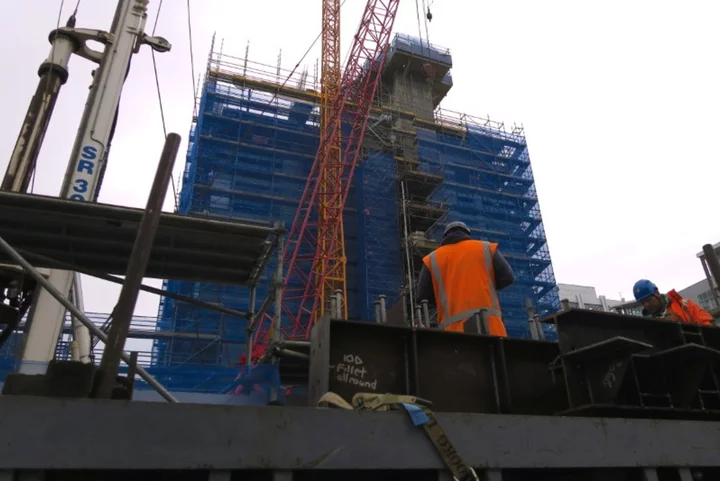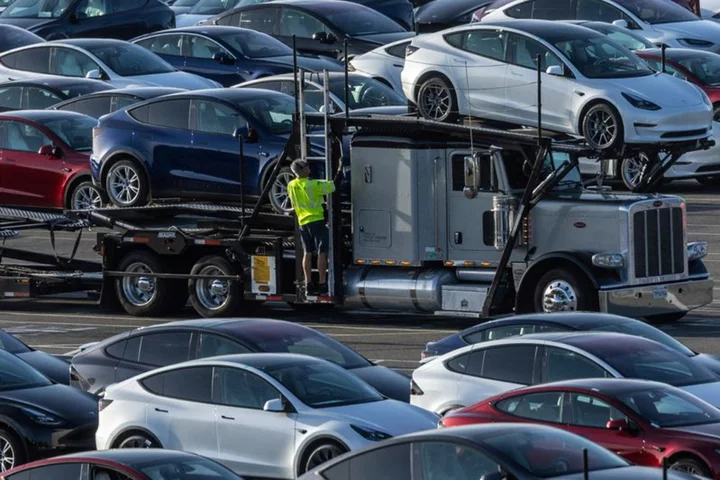ACAPULCO, Mexico (AP) — Estela Sandoval Díaz was huddled in her tiny concrete bathroom, sure these were the final moments of her life, when Hurricane Otis ripped off her tin roof.
With it went clothing, savings, furniture, photos and 33 years of the life Sandoval built piece-by-piece on the forgotten fringes of Acapulco, Mexico.
Sandoval was among hundreds of thousands of people whose lives were torn apart when the fastest intensifying hurricane on record in the Eastern Pacific shredded the coastal city of 1 million, leaving at least 45 dead. The Category 5 hurricane damaged nearly all of Acapulco's homes, left bodies bobbing along the coastline and much of the city foraging for food.
While authorities were hard at work restoring order in Acapulco's tourist center — cutting through trees in front of high-rise hotels and restoring power — the city's poorest, like Sandova,l said they felt abandoned. She and hundreds of thousands others lived two hours of terror last week, and now face years of work to repair their already precarious lives.
“The government doesn’t even know we exist,” Sandoval said. “They’ve only ever taken care of the resort areas, the pretty places of Acapulco. They’ve always forgotten us.”
It’s a sentiment that has long simmered in the city, but has grown in the aftermath of Otis as many accuse the government of leaving them to fend for themselves.
President Andrés Manuel López Obrador has deployed more than 10,000 troops to deal with the hurricane’s aftermath along with 1,000 government workers to determine needs. He said 10,000 “packages” of appliances and other necessities — refrigerators, stoves, mattresses — had been collected and were ready to distribute to families in need.
“Everyone will be supported, count on us,” he pledged last week.
But few of the dozens of people The Associated Press spoke to said they'd received aid from the government, nor were they expecting much.
—
Sandoval and her family have spent decades living a stone's throw away from the beachside high-rises and luxury stores lining Acapulco’s chicest district, the Diamond Zone.
Living in a two-room concrete house with no potable water and unpaved roads, that glamor never reached their doorstep. Referred to by locals as the “sunken neighborhood,” Viverista is always hit hardest by natural disasters.
Three years ago, Sandoval beamed with pride when, after 25 years of saving, she put a foot of concrete on the floor and a new metal roof on her house so it wouldn’t flood every time it rained. But that seemed a lifetime away Friday as Sandoval and her children picked through their soggy belongings.
“I was so happy because finally I had a sturdy roof, and my house was finally beautiful. But now — this is the first time I’ve been able to cry — I don’t know what we’re going to do,” the 59-year-old said. “I don’t think I’ll live another 20 years to fix it.”
Their home was surrounded by ankle-deep putrid water. Sandoval, her husband and two neighbors were sleeping under a sheet of metal propped against the house. She picked through scraps in her bedroom, taking note of what was ruined and planning how to ration water and gas for cooking.
Mexico’s government has tallied at least 220,000 homes damaged and says 47 people remain missing. Most residents expect the death toll to rise, based on the slow government response and overall devastation, with one city business leader estimating it will exceed 100.
Military, public security and forensics officials told the AP they were not permitted to provide details on the death toll or the search for bodies. Meanwhile, thousands of panicked family members desperately hunted for missing loved ones.
On Saturday, López Obrador blasted critics of his hurricane response, saying journalists and the political opposition had exaggerated casualties. He said Mexico’s security minister would provide an update on the human toll “without lying.”
“They don’t care about people’s pain, they want to hurt us. What they want is for there to be a lot of death so they can blame us," López Obrador said.
—
Otis intensified within hours from a tropical storm into the strongest hurricane to hit the Eastern Pacific coast, taking many by surprise. Many experts attributed the unanticipated burst of force to the effects of climate change, with warming seas acting as fuel for storms like Otis.
“We’re seeing so many more cases of these just astonishing rapid intensification events,” said climate scientist Jim Kossin. “This is exactly the kind of thing we would expect to find as the climate warms.”
The aftermath of the storm has once again underscored the disproportionate effect the climate crisis is having on poor communities and countries.
Sandoval and her husband slept until the 165-mph (266-kph) winds and crash of trees falling woke them at midnight. They sprinted out of the house to a set of square-meter (yard) concrete bathrooms, clinging to the plastic doors the hurricane threatened to tear off.
When she emerged around 2 a.m., peering through a steady drizzle, Sandoval saw her furniture soaked and her fridge, stove and other possessions destroyed. She said she could “smell the sadness in the air.”
With sparse food, water and gasoline, and no cellphone service, Sandoval and her family could do little more than scavenge for supplies in bare supermarkets. Avid supporters of López Obrador, they crossed their fingers he would follow through on his promise. They spent days waiting, but the only signs of government presence were navy helicopters circling overhead.
“When you’re completely enveloped by something like this — so fragile, so violent — you ask yourself, when are they going to come?” she said.
Many others faced the same question.
Following the storm, the city descended into a state of lawlessness. Trees and rubble blocked the main road for a day, and no cellphone signal left its 1 million people effectively cut off from the world.
Without options, Sandoval and many others took basic goods like food and toilet paper from ransacked stores and funneled gasoline out of tubes from broken-down gas stations. Those with chronic illnesses scrambled to find medicine they needed to survive.
Residents foraging for food in warehouses Saturday said they waited hours in the beating sun for food and water from a government aid truck only to find there wasn’t enough for them.
Children stood on roadsides waving empty water bottles and families screamed, “Help us! We’re desperate!” at cars with shattered windshields and military trucks passing by.
Residents like Natividad Reynoso, whose business selling plants to hotels was wiped out by the storm, worried it would mean the long-term destruction of Acapulco’s main economic engine.
"We’re an Acapulco that lives off tourism,” the 41-year-old said.
By the weekend, cellphone signal was being restored, aid was being distributed and the military cleared trees and rubble from the city center, a stark contrast with poor areas where chaos still reigned.
Fisherman Eleazar García Ramirez, 52, was still wrapping his mind around the devastation as he tinkered inside a boat with a cracked mast on the beach surrounded by the remains of boats and broken trees.
He has spent recent days diving into the ocean to pull out bloated bodies bobbing next to sunken boats, he said.
He weathered the storm on a fishing boat his boss asked him to watch over, fearing that to refuse would cost him his job.
“This is what we survive off of, and there’s not a lot of work in Acapulco,” he said.
The majority of the dead he and others found were fishermen fearful of losing their livelihoods or yacht captains told by owners to stay with the boats, he said. Authorities said most of the bodies found in recent days had drowned.
García Ramirez and other fishermen pulled the boats onto the city’s Manzanilla Beach when Otis was still a Category 2 storm. A friend was watching over a boat 20 meters (yards) up the beach.
The boat García Ramirez was in was pulled into the waves, when he heard screams of “help me!” as he clung to the boat's metal poles.
When he finally peered out into the dark night he saw his friend’s boat floating alone at sea. His friend never appeared.
“It’s sad because there are many people that didn’t need to be on these boats, but their bosses decided that we’re worth nothing," he said. "They’re not interested in the well-being of their workers, all they care about is their own economic well-being."
——
Associated Press Science Writer Seth Borenstein in Washington and photographer Félix Márquez in Acapulco, Mexico, contributed to this report.









